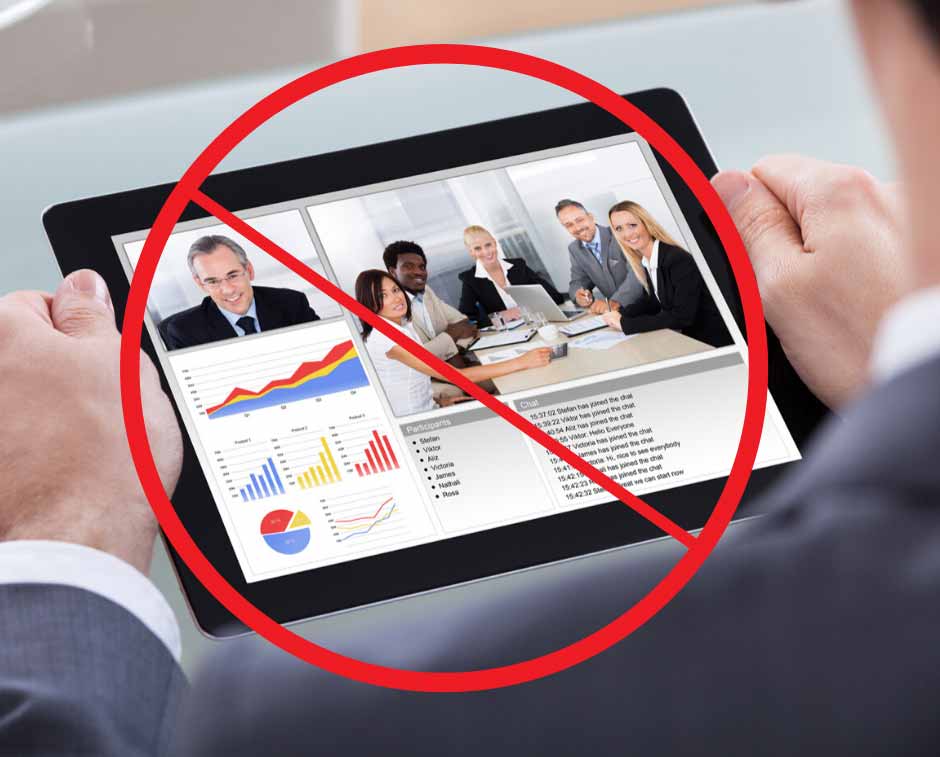The majority of the American workforce has been working from home during the pandemic, and technology has certainly been our friend in facilitating this. In fact, downloads for video chat apps surged as leaders and managers used video conferencing for meetings. Families and friends have also been using these video apps, such as Zoom, Webex, and Skype, to stay connected, to celebrate birthdays, and enjoy happy hours. Certainly, these apps have their benefits.
However, if you’ve been feeling “Zoom fatigue” recently (and I use Zoom as a generic term for all video apps here), you’re not alone. A few weeks ago, I noticed that I felt drained after any type of Zoom meeting – whether it was related to work or fun. At first, I thought it was just the introvert part of me feeling tired and didn’t think much more about it. Then, I started to see the articles and research on this phenomenon, and realized, okay, this is a real thing, and we all need to be aware of it.
A fabulous piece by Kate Murphy in the New York Times explains why:
- Research shows that video communication can leave people feeling burned out, foggy, alienated, tired, and uncomfortable.
- Humans are hard-wired to read facial expressions, and when those are distorted or frozen over a video feed, it causes cognitive problems.
- It alters our perceptions and interferes with our ability to mirror others’ emotions, which is something we all do whether we realize it or not.
- So, when we’re not able to effectively complete these built-in cognitive functions, no wonder we’re left feeling unsettled and drained.
Another factor is trust. Even though we see each other face-to-face over video, we’re not actually able to look at each other in the eye. Plus, people might come across as being distracted, guilty, or aloof depending on where they’re looking whilst on-camera.
Finally, as this article also notes, we can simply feel incredibly self-conscious, which leads to feelings of discomfort. Let’s face it, most of us look at ourselves when we’re on these calls. And, I don’t know about you, but I’ve definitely been cringing at how I look two months into a lockdown with no access to hair stylists or waxing services (roots and monobrow, anyone?)!
Now, the other side of the coin is that the research also shows that no visual of people’s faces can actually create better communication. Without visual cues, people become more sensitive to what’s being said and the tone of voice. So, maybe the telephone is a case of old friends are the best friends.
Now, what does this all mean for you managing your team remotely? Should you not use video conferencing at all?
No. It means that before you organize another video conference with your team, pause and ask yourself whether it’s absolutely necessary or would a regular telephone conference call work just as well.
If someone needs to share a presentation on-screen, by all means, video conferencing is the ticket. However, maybe relax the “cameras on” protocol, while a presentation is being given, and only require them for actual discussion or small breakout groups. Or, use the webinar function for these meetings where only the presenter and his/her screen is visible.
If no presentation is needed, maybe a telephone conference call will serve you and your team better.
And, of course, don’t forget to just ask your team how they feel about video conferencing. Are they okay with it? Do they want more/less of it? Do they want to create new ground rules about having cameras on during meetings?
We’re all navigating this modified world together, and remote working will continue to grow, even as the threat of Covid-19 starts to decline. So, be open, be flexible, and consult with your employees so everyone feels involved in creating your team’s new norms.
If you’ve got questions or you want to share how you’re leading your remote-working team during this crisis, drop me a line at [email protected] – I always love to hear from you. Plus, if you want me to address a specific topic in these posts, just let me know.
Also, if you want some simple practices that can increase positivity for you and your team, you can download my book for free, right here: 25 Tips for Leaders: How to Leverage the Science of Happiness to Increase Performance, Productivity, and Profitability.






0 Comments